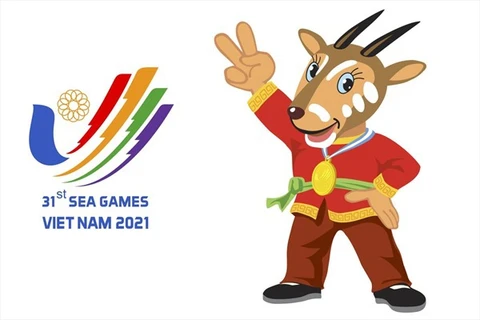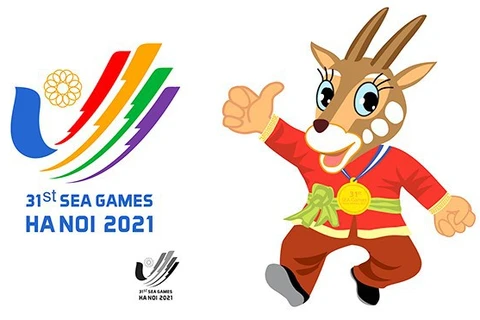HCM City (VNS/VNA) - The e-sports industry promises many opportunities for brand collaboration, experts have said.
A white book on e-sports recently released by Vero in cooperation with Decision Lab said brands could enter the e-sports market through activities such as in-game advertising, cross-platform advertising, tournament sponsorship, team/player sponsorship, and co-creation.
According to research, forms advertising remains an effective tactic for brands to connect with potential customers.
About 86 percent of e-sports viewers claim to interact with the brands’ ads.
Over half of watchers trust the products recommended by KOLs they follow, and 42 percent buy such products often and consider them personally relevant.
Besides, unlike traditional sports, e-sports players can also actively create their own content instead of just consuming content provided by gamers, and this offers a lot of new opportunities for brands to interact with the public and co-create high-value content.
Therefore, brands should consider the e-sports industry a “co-business” rather than a “show-business” and, by leveraging its ecosystem, could reach the public easily and optimise their campaigns.
In recent years e-sports has developed strongly in Việt Nam and this is expected to continue.
Like its precursor, gaming, e-sports has changed from being a subcultural interest to a mainstream cultural force, opening up a wide range of opportunities for brands.
Vietnam, with a large, dynamic and well-integrated youth population, is catching up with the e-sports industry. The country is an attractive growth market for the gaming industry, with one of the youngest populations in the region and the highest percentage of adult gamers in the world in 2020.
About a third of the population now plays e-sports games.
Do Viet Hung, secretary general of the Vietnam Recreational and Electronic Sports Association, said: “In 2021 e-sports will continue to appeal to a large number in Vietnam. In contrast to other sports, the digital nature of e-sports has allowed it to maintain many of its events and tournaments despite the COVID-19 pandemic.”
The inclusion of e-sports in the 31st SEA Games should also help enhance its popularity in Vietnam, he added.
The white book said that while young people still make up the majority of e-sports players, 47 percent are aged 30-40.
The study also found that women made up 38 percent.
Contrary to the stereotype that gaming is solitary and antisocial, 46.5 percent of respondents see interaction with others as a primary factor for playing.
Nguyen Tran Son, head of Esports Manager at VNG Corporation, said: “Given the enormous value that the community and ecosystem of e-sports can bring, I believe investors and big brands will not be able to ignore this fertile land full of potential. Soon competition between brands will become more and more intense. I believe entering e-sports at this time is perfectly appropriate to deliver the highest value at the lowest cost.”/.
A white book on e-sports recently released by Vero in cooperation with Decision Lab said brands could enter the e-sports market through activities such as in-game advertising, cross-platform advertising, tournament sponsorship, team/player sponsorship, and co-creation.
According to research, forms advertising remains an effective tactic for brands to connect with potential customers.
About 86 percent of e-sports viewers claim to interact with the brands’ ads.
Over half of watchers trust the products recommended by KOLs they follow, and 42 percent buy such products often and consider them personally relevant.
Besides, unlike traditional sports, e-sports players can also actively create their own content instead of just consuming content provided by gamers, and this offers a lot of new opportunities for brands to interact with the public and co-create high-value content.
Therefore, brands should consider the e-sports industry a “co-business” rather than a “show-business” and, by leveraging its ecosystem, could reach the public easily and optimise their campaigns.
In recent years e-sports has developed strongly in Việt Nam and this is expected to continue.
Like its precursor, gaming, e-sports has changed from being a subcultural interest to a mainstream cultural force, opening up a wide range of opportunities for brands.
Vietnam, with a large, dynamic and well-integrated youth population, is catching up with the e-sports industry. The country is an attractive growth market for the gaming industry, with one of the youngest populations in the region and the highest percentage of adult gamers in the world in 2020.
About a third of the population now plays e-sports games.
Do Viet Hung, secretary general of the Vietnam Recreational and Electronic Sports Association, said: “In 2021 e-sports will continue to appeal to a large number in Vietnam. In contrast to other sports, the digital nature of e-sports has allowed it to maintain many of its events and tournaments despite the COVID-19 pandemic.”
The inclusion of e-sports in the 31st SEA Games should also help enhance its popularity in Vietnam, he added.
The white book said that while young people still make up the majority of e-sports players, 47 percent are aged 30-40.
The study also found that women made up 38 percent.
Contrary to the stereotype that gaming is solitary and antisocial, 46.5 percent of respondents see interaction with others as a primary factor for playing.
Nguyen Tran Son, head of Esports Manager at VNG Corporation, said: “Given the enormous value that the community and ecosystem of e-sports can bring, I believe investors and big brands will not be able to ignore this fertile land full of potential. Soon competition between brands will become more and more intense. I believe entering e-sports at this time is perfectly appropriate to deliver the highest value at the lowest cost.”/.
VNA

























